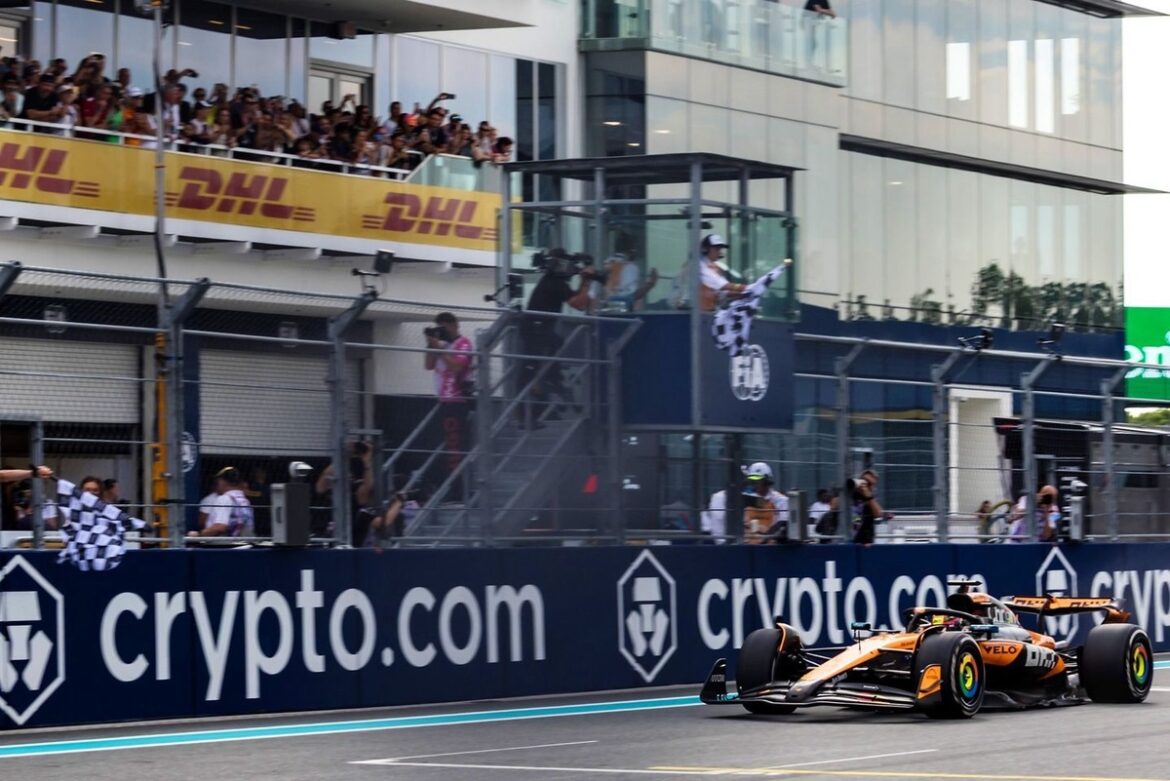Understanding the Dual Chequered Flags in Formula 1
In the thrilling world of Formula 1 racing, the iconic black and white chequered flag is a universally recognized symbol, signifying the conclusion of a race. Traditionally, the driver who crosses the finish line first is celebrated as the victor, with the waving of this flag marking their achievement. However, a curious trend has emerged during the 2025 F1 season: the appearance of two chequered flags at the end of certain races. This phenomenon has left many fans and viewers wondering about its significance.
The Significance of the Chequered Flag
To fully grasp the importance of the chequered flag, it is essential to understand its role within the context of Formula 1 racing. The chequered flag is the official indicator that a race has concluded. It is waved by an official at the finish line and is marked with the logo of the Federation Internationale de l’Automobile (FIA), the governing body of motorsport. This flag signifies not only the end of the race but also the official recognition of the race winner.
However, during the 2025 season, fans have observed instances where two chequered flags were displayed at the end of races, notably during major events in Suzuka, Miami, and Barcelona. While this might seem confusing, it is essential to differentiate between the two flags being waved.
The Role of the Second Chequered Flag
The second chequered flag, often waved from the pit wall, does not hold any regulatory authority. Instead, it serves as a marketing initiative designed to engage fans and enhance the spectacle of the race. According to a representative from the FIA, the second flag is essentially a promotional tool, staged to create a memorable visual moment for television audiences and spectators alike.
For example, at the Spanish Grand Prix held in Barcelona, the renowned footballer Robert Lewandowski had the honor of waving this secondary flag. This practice draws parallels with ceremonial kick-offs in sports like football, where guest appearances add an extra layer of excitement and significance to the event.
Fan Engagement Through the Chequered Flag
One of the most intriguing aspects of the second chequered flag is its connection to fan participation. Each panel of this flag features the names of fans who have paid to have their names included, thus allowing them to be part of the racing experience. This initiative offers a unique opportunity for enthusiasts to commemorate their connection to the sport in a tangible way.
The pricing for inclusion on the various race flags can vary significantly, reflecting the prestige of the event. For instance, having your name displayed on the Hungarian Grand Prix flag costs approximately €241.95, while a spot on the Las Vegas Grand Prix flag is priced at an eye-watering €665.95. The cost is indicative of the high-profile nature of the events and the potential exposure they offer to fans.
The Commemorative Aspect
Beyond simply having their names on a flag, fans who participate in this initiative receive a framed keepsake after the race. This memento includes a photograph of the flag being waved in front of the winning car, along with the specific panel featuring their name, and a certificate of authenticity. This adds a layer of sentimental value for fans, allowing them to cherish their involvement in the event long after the race has concluded.
While this second flag does not signify the end of the race in an official capacity, it provides an avenue for fans to connect with the sport on a deeper level. It transforms the race experience from a passive observation to an active participation, allowing enthusiasts to feel a sense of ownership over the event.
The Marketing Strategy Behind the Dual Flags
The introduction of the second chequered flag is part of a broader marketing strategy employed by Formula 1 to enhance fan engagement and create additional revenue streams. As the sport continues to evolve, attracting new audiences and retaining existing fans has become increasingly important. By incorporating elements that allow fans to participate in the race experience, F1 is tapping into the emotional connection that many have with the sport.
This marketing approach is not unique to Formula 1; many sports have adopted similar strategies to boost fan involvement. For instance, various sports leagues offer fans the chance to have their names displayed on digital screens during games or even on merchandise. Such initiatives not only foster a sense of community among fans but also drive revenue through ticket sales and merchandise purchases.
The Future of the Chequered Flag in Formula 1
As the 2025 season progresses, it will be interesting to see how the dual chequered flag trend develops. Will it become a staple of F1 races moving forward, or will it fade into the background as a passing novelty? The response from fans and the broader audience will likely play a significant role in determining its future.
The incorporation of a second flag raises questions about how Formula 1 can continue to innovate and engage its fan base. In an era where sports are increasingly competing for attention, finding unique ways to connect with audiences is paramount. The dual chequered flag serves as a reminder that even in a sport as traditional as Formula 1, there is room for creativity and evolution.
Conclusion
The dual chequered flags seen during the 2025 Formula 1 season represent an intriguing intersection of tradition and modern marketing. While the official chequered flag remains the definitive symbol of a race’s conclusion, the second flag introduces an element of fan engagement that has the potential to enrich the overall experience for spectators. As Formula 1 continues to adapt and grow, the evolution of its traditions may pave the way for a more interactive and interconnected future for fans across the globe.
